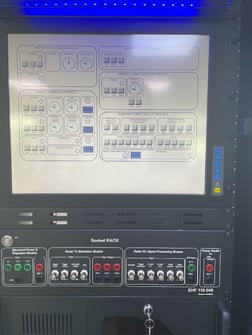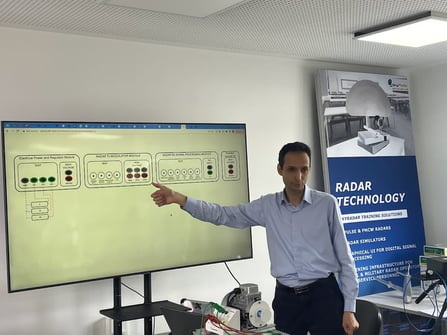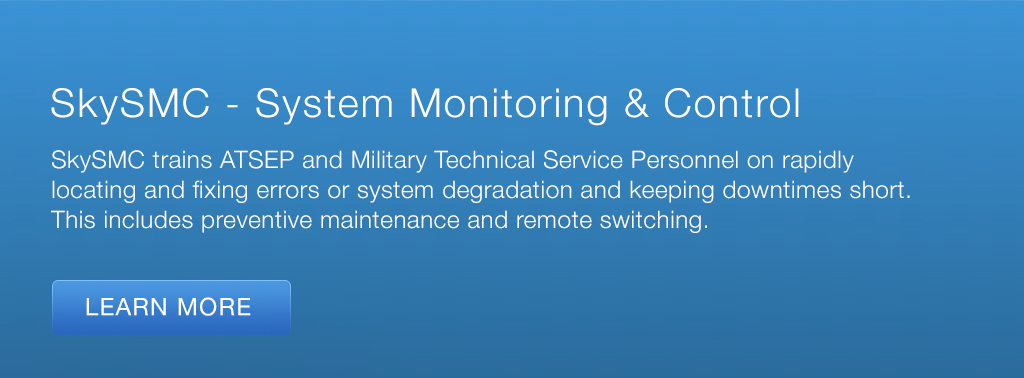Processing errors due to lack of accuracy in ATC can cause miscommunication incorrect flight plans and potential collisions leading to delays flight cancellations and safety risks for passengers and crew.
Introduction
Processing errors due to accuracy issues refer to errors or mistakes that occur in air traffic control communications or data processing systems leading to incorrect flight plans miscommunication between air traffic controllers and pilots and potential safety hazards for passengers and crew. These errors can be caused by a range of factors including human error technical issues and environmental factors and can have significant impacts on the safety and efficiency of air travel. Accuracy in the context of air traffic control services refers to the degree of precision and correctness in the information and data provided by air traffic control systems and personnel. Accurate information is critical for safe and efficient air travel.
When an air traffic control system provides the altitude and location of an aircraft to pilots it must be accurate to ensure that the pilots navigate the aircraft safely and avoid potential collisions with other aircraft. Similarly when an ATSEP (Air Traffic Safety Electronics Personnel) maintains a radar system they must ensure that it is calibrated accurately to provide accurate location data for air traffic controllers.
Scenario Relate to Air Traffic Control Environment
Imagine an air traffic controller is providing instructions to a pilot regarding their flight plan. However due to a processing error the altitude and location of the aircraft are incorrect. The pilot receives the incorrect information and follows the instructions given by the air traffic controller. This leads to the aircraft flying into restricted airspace or into the path of another aircraft potentially causing a collision.
Alternatively a processing error in the air traffic control system may cause incorrect information to be displayed on the radar screens leading to air traffic controllers providing incorrect instructions to pilots. For example the system may display an aircraft at a different altitude or location than it is actually at causing air traffic controllers to issue instructions based on the incorrect information. This can lead to miscommunication and potential safety hazards for the aircraft and passengers.
In both scenarios the processing error related to lack of accuracy can have serious consequences for air traffic control services potentially causing delays flight cancellations and safety risks for passengers and crew. It highlights the importance of accuracy in air traffic control systems and personnel to ensure safe and efficient air travel. Processing errors related to accuracy issues in air traffic control services can have significant impacts on the safety and efficiency of air travel.
Inaccurate information can also lead to delays and cancellations as air traffic controllers may need to recalculate flight plans or issue new instructions based on corrected information. This can cause significant disruption to air travel schedules inconveniencing passengers and potentially causing financial losses for airlines.
Hence ensuring accuracy in air traffic control systems and personnel is critical for safe and efficient air travel and processing errors related to accuracy issues must be identified and resolved promptly to minimize potential impacts on air traffic control services.
Steps to be taken by ATSEP in Rectification of Processing errors related to Lack of Accuracy
When a processing error related to lack of accuracy is identified in air traffic control systems ATSEPs (Air Traffic Safety Electronics Personnel) play a crucial role in rectifying the error promptly and ensuring the safe and efficient operation of air traffic control services. Here are some steps that ATSEPs can take to rectify processing errors related to accuracy:
Identify the source of the error
ATSEPs need to identify the root cause of the error and determine the scope of the impact on air traffic control services. This may involve analyzing system logs reviewing data and consulting with other air traffic control personnel.
Develop an action plan
Once the source and scope of the error have been identified ATSEPs need to develop a plan of action to rectify the error. The plan should include steps to minimize the impact on air traffic control services and ensure the safe operation of air traffic.
Implement the action plan
ATSEPs should implement the action plan promptly ensuring that all necessary personnel are informed and involved in the process. The plan may involve adjusting flight plans recalibrating equipment or implementing new procedures to prevent similar errors from occurring in the future.
Monitor and verify the solution
After implementing the action plan ATSEPs need to monitor and verify the solution to ensure that it has resolved the processing error related to accuracy. They may conduct tests or simulations to verify that the system is operating correctly and provide feedback to other air traffic control personnel.
After implementing the action plan ATSEPs need to monitor and verify the solution to ensure that it has resolved the processing error related to accuracy. They may conduct tests or simulations to verify that the system is operating correctly and provide feedback to other air traffic control personnel.
Document the error and solution
ATSEPs should document the processing error and the steps taken to rectify it for future reference. This documentation can help to prevent similar errors from occurring in the future and serve as a reference for other air traffic control personnel who may encounter similar issues.
Steps to be followed by ATSEP for preventing Accuracy
The prompt identification and rectification of processing errors related to accuracy by ATSEPs is crucial for maintaining the safety and efficiency of air traffic control services.
To prevent processing errors related to accuracy in air traffic control systems ATSEPs (Air Traffic Safety Electronics Personnel) need to take several steps to ensure the integrity of the systems. Here are some steps that ATSEPs can take to prevent accuracy errors in air traffic control systems:
The prompt identification and rectification of processing errors related to accuracy by ATSEPs is crucial for maintaining the safety and efficiency of air traffic control services.
To prevent processing errors related to accuracy in air traffic control systems ATSEPs (Air Traffic Safety Electronics Personnel) need to take several steps to ensure the integrity of the systems. Here are some steps that ATSEPs can take to prevent accuracy errors in air traffic control systems:
Conduct regular maintenance and testing
Here are some steps that ATSEPs can take to prevent accuracy errors in air traffic control systems:
Regular maintenance and testing of air traffic control systems can help identify and prevent accuracy errors before they occur. ATSEPs should develop a maintenance schedule and conduct regular tests to ensure that systems are functioning correctly.
Develop and implement procedures
ATSEPs should develop and implement procedures for air traffic control personnel to follow to minimize the potential for processing errors related to accuracy. Procedures should be clear and concise and personnel should be trained to follow them consistently.
Use redundant systems
The use of redundant systems can help prevent accuracy errors in air traffic control systems. ATSEPs should ensure that critical systems have backup systems in place to maintain continuity in the event of a failure.
Provide training and support
ATSEPs should provide ongoing training and support to air traffic control personnel to ensure that they have the skills and knowledge necessary to operate the systems correctly. This may include providing additional training on new systems procedures or updates.
Monitor and analyze system data
ATSEPs should regularly monitor and analyze system data to identify potential accuracy errors and take corrective action before they cause problems. System data can provide valuable insights into potential issues and help identify trends or patterns that could lead to errors.
Stay informed about new technologies and standards
ATSEPs should stay up-to-date with new technologies and standards related to air traffic control systems. This can help them identify potential accuracy errors and implement best practices for preventing them.
Factors Responsible For Processing Errors Related to Lack of Accuracy
Preventing processing errors related to accuracy requires ongoing vigilance and attention to detail by ATSEPs. By implementing these steps they can help maintain the safety and efficiency of air traffic control services. Processing errors related to accuracy in air traffic control systems can be caused by several factors. Here are some of the most common factors responsible for processing errors related to accuracy and an explanation of each factor:
Human error
Human error is one of the most common factors responsible for processing errors related to accuracy. This may include errors made by air traffic control personnel such as incorrect data entry misinterpretation of data or failure to follow established procedures.
Equipment malfunction
Equipment malfunction can also cause processing errors related to accuracy. This may include errors caused by faulty sensors communication systems or software bugs.
Environmental factors
Environmental factors such as weather or electromagnetic interference can also cause processing errors related to accuracy. This may include errors caused by radar interference or communication disruptions.
System overload
Overloading of air traffic control systems can cause processing errors related to accuracy. This may occur when systems are processing too much data and the system becomes overwhelmed resulting in errors or delays.
Lack of system redundancy
Lack of redundancy in air traffic control systems can cause processing errors related to accuracy. This may occur when critical systems do not have backup systems in place and failures can result in processing errors or system downtime.
Lack of system updates
Outdated air traffic control systems can also cause processing errors related to accuracy. This may include systems that are no longer supported or updated resulting in outdated software or hardware that can lead to errors.
ATSEPs (Air Traffic Safety Electronics Personnel) must take steps to identify and address these factors to prevent processing errors related to accuracy and ensure the integrity of air traffic control systems.
Some common types of Processing errors caused by Accuracy
ATSEPs (Air Traffic Safety Electronics Personnel) must take steps to identify and address these factors to prevent processing errors related to accuracy and ensure the integrity of air traffic control systems.
Data entry errors
Data entry errors occur when air traffic control personnel enter incorrect data into the system. This may include errors such as incorrect flight numbers or altitude settings.
Misinterpretation errors
Misinterpretation errors occur when air traffic control personnel misinterpret data or instructions. This may include errors such as misunderstanding communication from pilots or misreading radar data.
System errors
System errors occur when air traffic control systems fail to process data accurately. This may include errors such as miscalculating aircraft trajectories or failing to detect potential collisions.
Communication errors
Communication errors occur when there is a breakdown in communication between air traffic control personnel or between air traffic control personnel and pilots. This may include errors such as miscommunication regarding flight paths or misunderstandings regarding instructions.
Equipment errors
Equipment errors occur when air traffic control equipment fails to function correctly. This may include errors such as faulty sensors or software bugs that result in incorrect data or system malfunctions.
Procedural errors
Procedural errors occur when air traffic control personnel fail to follow established procedures correctly. This may include errors such as failing to follow correct protocol for communicating with pilots or failing to adhere to established safety procedures.
Impact of Processing errors related Accuracy Issues
Processing errors related to accuracy can have a significant impact on the safety and efficiency of air traffic control services. Here are some examples of the impact of processing errors related to accuracy:
Delays
Processing errors can cause delays in air traffic control services leading to longer wait times for passengers and potential missed connections. This can have a significant impact on the efficiency of the aviation industry as a whole.
Safety concerns
Processing errors can result in safety concerns such as potential collisions or near misses. These errors can compromise the safety of passengers crew and aircraft and can have significant legal and financial consequences.
Increased workload
Processing errors can increase the workload for air traffic control personnel leading to stress and fatigue. This can potentially result in further errors and safety concerns.
Damage to reputation
Processing errors can increase the workload for air traffic control personnel leading to stress and fatigue. This can potentially result in further errors and safety concerns.
Processing errors can damage the reputation of air traffic control services leading to a loss of public trust and confidence. This can have significant financial and operational consequences for the aviation industry.
How to prevent Errors due to Accuracy
To prevent errors related to accuracy in air traffic control services the following measures can be taken:
Standard Operating Procedures
Clear and comprehensive standard operating procedures (SOPs) should be developed and followed by air traffic control personnel. This includes procedures for data entry communication and equipment operation.
Training
Air traffic control personnel should receive regular training to ensure that they understand and adhere to established procedures. This includes training in the use of equipment and software as well as communication and decision-making skills.
Automation
The use of automation can reduce the potential for human error in air traffic control systems. This includes the use of automated equipment and software to assist with data processing and decision-making.
Feedback mechanisms
Feedback mechanisms should be put in place to identify errors and provide air traffic control personnel with the opportunity to learn from mistakes. This includes regular performance evaluations and debriefings following incidents.
Quality assurance
Quality assurance processes should be implemented to monitor and evaluate the accuracy of air traffic control services. This includes regular audits and inspections of equipment and procedures.
SkyRadar's System Monitoring & Control Solution
SkySMC - SkyRadar’s System Monitoring and Control Suite is a pedagogically enhanced, fully operational monitoring & control tool. It has been designed to practice these use cases. We have optimized it to host ATSEP training in SUR, NAV, COM, DPR and SMC compliant to EASA's Easy Access Rules for ATM-ANS (Regulation (EU) 2017/373) and ICAO Doc 10057.
SkyRadar provides SkySMC as a complete laboratory in a turn-key approach, or as a virtual infrastructure (for purchase or as a service).
SkySMC is not a simulator, but a fully operational open monitoring system. It comes by default with a server including various virtualized applications and virtualized servers, but also connects to simulated systems. In addition, there are various hardware extensions available including training infrastructures, monitorable training radars, or even complete ATM systems, all connected to the System Monitoring & Control solution. Most components such as the radars, it IT infrastructure or networks exist in hardware and software (virtualized or simulated).
The two photos above show the same trouble-shooting panel and socket rack in real hardware and in the simulator (fully functioning).
SkyRadar's System Monitoring & Control training system can be easily blended into distance learning solutions and existing learning management systems.
Let's talk
Stay tuned to be always the first to learn about new use cases and training solutions in radar qualification (real radars or simulators) for ATSEP.
Or simply talk to us to discuss your training solution.
References
- "Accuracy in Air Traffic Control Services" by Doe J. (2020)






